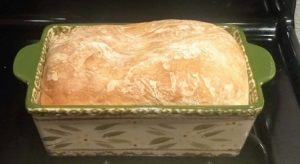
You’ve seen the headlines. We are now seeing the highest levels of unemployment and market crashes since The Great Depression.
One thing that gives me comfort is that, one way or another, society made it out of The Great Depression. No, the world wasn’t the same when it was over and it certainly won’t be for us today after we have COVID-19 under control. But, we still survived. The tunnel was long and bleak, but there was an end to it. At some point, this too shall pass. But for now, we are in this, and we are going to make the best of it.
The more I read about this time period the more inspired I have been by how people tightened their belts and made ends meet. In fact some of these frugal tips from The Great Depression have motivated me to not only get my frugal on but take it to the next level.
Victory Garden
I was struck by a recent conversation with an older relative regarding The Great Depression. He said that his father told him that when people were laid off in this time they usually had family land they could return to. So, they would hitchhike, get on a train, walk, or whatever it took to make it back home. There, they’d have at least a floor to sleep on and possibly a patch of abandoned land on the family property to work. They could produce food to eat and sell whatever was left to get a little money in their pocket. Nowadays, agriculture comprises a minute fraction of our economy compared to what it once encompassed. Also, a much higher percentage of people live in urban settings. So very few people by comparison have family land they can return to.
Though this is no longer a way to make a serious buck, it’s still a great way to subsidize your cost of living. It can also provide a healthy hobby while avoiding the grocery store just a little bit more. Growing plants can also provide a lot of mental health benefits and something to look forward to everyday.
Though I live in an urban area, I do have a backyard with a lawn I have slowly been digging up in favor of a garden.

The quarantine has motivated me to double my efforts and expand just a little bit more. I’m estimating that for every $2.50 seed pack I bought, I’ll reap about $100 worth of fresh produce if everything goes right! But, even if you don’t have land to work with, pots of herbs can grow in any sunny window and will both stretch your budget and season your food.
Waste Not, Want Not
One of the core principles from The Great Depression teaches us to only buy what you need and can’t produce yourself. Meaning, if you don’t have a specific plan for the consumable item in your cart, it doesn’t belong there!
After you have checked that off your list, remember that there is a use for everything in your refrigerator. When you think you’re down to the wire and your pantry is too sparse to go on, check out websites like SuperCook. Here you can enter all the ingredients you have and see crowd sourced recipes that only include items you have. You might be surprised at what you can make even if you just have a few ingredients left!
Keep a close eye on your fresh foods and make sure nothing expires before you get a chance to dig in. Take advantage of freezing or dehydrating food at their peak freshness if you think you won’t get to them in time. My freezer is consistently filled to the brim because I love to make large batches of food and enjoy them later.
Using Food Waste
Even after you have used your fresh produce, you can still make use of the scraps! Saving clean veggie and meat scraps can make some killer stock if you are willing to put in the time and effort. You can also boil these down and freeze them to reheat and rehydrate later on.
Did you know that you can regrow some vegetables such as celery, bok choy, and green onions with ease? What’s better than taking a product you bought from the store and creating a plant that can provide you with an unlimited yield? Expand your garden and wallet at the same time!
Compost 
When you are looking at produce that truly no longer has any purpose other than to be disposed of, it’s time to toss it. But not into the garbage can! Part of why my economic yield for gardening is so high is because I compost everything that can be reasonably composted. I save yard waste, leaves, shredded paper, and food waste and make beautiful black gold from it. I produce around 20 gallons of compost in my compost tumbler annually and much more in my yard waste compost overflow pile. This cuts down on my need for fertilizer and nourishes my plants to improve their yield!
Use What You Have
Similar to “waste not, want not,” using what you have encourages you to really take inventory of your belongings and use them up then while also finding new purposes for old things.
Too often we replace things when there are only minor defects or they’ve fulfilled about 80% of their purpose.
Shoes scuffed? Polish them.
Toothpaste finished? Cut the tube open and brush your teeth for another week.
Bar of soap used up? Save it in a mesh bag with other bars to make a new hodgepodge bar and stay clean for longer.
Have some old hotel samples? Use these up before you buy more soap! (Hotel conditioner makes great shaving cream from personal experience)
Old clothes you aren’t going to wear anymore? Reuse or upcycle these for a new purpose! How many face masks can you make out of that shirt in your donation bin?
Missing a button? Hole in your shirt? Time to pull out your needle and thread. These are some of the easiest repairs you can make. If you don’t know how to sew, let me be the first to heavily encourage you to learn! My grandmother taught me to hand sew when I was about 5 and I have saved probably thousands by repairing and occasionally even making my own clothes.
Make It Yourself
I have been inspired by this principle lately to reduce my spending even further. Though I consider myself pretty frugal, I was absolutely enjoying things I could have made myself like store bought bread and canned beans.

Baking your own bread can be extremely economical, especially if you get your hands on a sourdough starter.
Soaking beans overnight and popping them into the instant pot takes about 5 minutes max of effort and costs a fraction of what the canned version does. I usually make 4 cups dry, which turns into at least 10 cups after cooking. Then, I store around 2-3 cups at a time in my refrigerator and freeze the rest. I do this just every 2-3 weeks and save around $3.50 for every batch I make.
Do Without
Finally, I want to include one more frugal lesson from The Great Depression that I have been leaning on lately.
When in doubt, do without
I have been so keenly aware during this time of how lucky and privileged I really am.
If there are ingredients I can’t easily access anymore (looking at you nutritional yeast) or just want to cut to save on costs (it’s been real Topo Chico) I have simply been doing without. There are truly so many luxuries I already have in my everyday life.
Doing without certain items has just reminded me of all that I do have. I’m feeling more and more grateful for the simple things I once took advantage of. Instead of feeling deprivation, this has given way to a spirit of abundance for me.
Have you incorporated any of these frugal tips from The Great Depression into your life during The Great Lockdown?
2 thoughts on “Frugal Tips from The Great Depression”